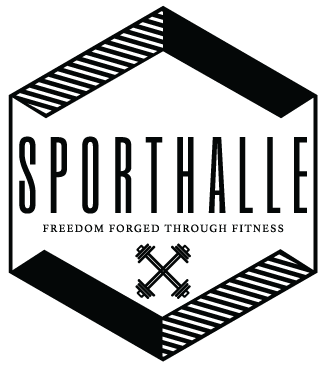Easy food swaps to keep you fit.
Is there anything like a piping hot slice of pizza sliding out of the oven? How about a heaping mountain of nachos in front of you during the game or a tall stack of pancakes for weekend brunch?
As you look to improve your diet you may have struggled to give up certain foods. Knowing how to make a few simple ingredient changes can have a major impact on your nutrition and health. The best part is that you don’t have to sacrifice any of the delicious foods you love. Whether you are an athlete, a mom, a busy working professional, or maybe even a combination of all three of those, making healthy diet choices easier is something you can benefit from. Try these a few of these easy switches to make any meal healthier!
“You are what what you eat eats.” -Michael Pollan
A twist on pasta
Spaghetti dinner is a staple in many American diets but if you are focused on eating healthy you have to tread lightly. The calories and carbohydrate content of pasta adds ups quick. Even alternative pastas that are gluten free are still calorie dense foods to keep an eye on. A better choice is to try veggies like spaghetti squash or spiralized zucchini. Combined with a low sugar tomato sauce and a healthy serving of lean protein pasta night can take on a whole new meaning of health.
A new slice on pizza
Pizza can be tough to navigate as your range of options is so vast. Some local joints may use great quality ingredients but still pack a caloric punch. National chains should be totally avoided with the processed ingredients and additives that make up their knock-off pies. Since most of us would love to keep pizza in our lives it is important to develop a system of eating it that supports your diet and lifestyle goals. Gluten free has become a buzzword and marketing tool used to attract new customers. I’m not here to have the GF debate about whether or not your body can digest it, I’m saying that a pizza crust made from processed starches that happen to not have gluten does not make them any healthier. Luckily you have a few options…
One method is to limit total intake, order a pizza with as many veggies and proteins on it as possible and limit yourself to one slice of the crust. Or you can try finding a restaurant that has or making your own cauliflower crust pizza. This is a great low carb alternative that lets you reach for another guilt-free slice.
Flip what you sip
It’s easy to forget the calories that are found in drinks. A study conducted by Harvard found that women who consumed sugar sweetened drinks daily tended to consume more calories daily and gained weight. Meanwhile women who eliminated sugar sweetened beverages tended to consume fewer calories and demonstrated better body composition. Scientists believe that drinking calories doesn’t provide the same signaling mechanisms in the body as food does. Basically our body doesn’t recognize it has consumed calories and the subsequent insulin spike can leave you feeling energy depleted and hungry.
Soda, juice, and alcohol don’t really belong in your diet if you are trying to build muscle or burn fat. If you are looking for a fun drink try reaching for a juice made from vegetables like kale and collard greens, powerful nutrients like ginger root, and maybe a dash of lemon or lime juice. Kombucha, a fermented tea beverage, can be a great option as well provided you find a low sugar variety (always read the label) and of course there are many great flavored sparkling and seltzer water options out there.
The Burger Swap
One of the toughest foods to give up can without a doubt be the hamburger. Before you part ways with this American classic let’s figure out a way for you to still enjoy your cheeseburger in paradise…
There are two ways to clean up this delicious food. One way is to eliminate the bun. Replace it with a collard greens wrap or two pieces of fresh romaine lettuce. Two large portobello mushrooms can also do the trick if you have them available (Pro tip: Grill the mushrooms for 2 minutes on each side with a little oil, salt, and pepper).
The second way to clean up your burger is to make sure you have a patty made from high quality grass fed beef or organic ground turkey. Balance the fats you use as topping and try swapping out the cheese for some fresh avocado slices.
Pancake, stacked to jacked
Fluffy buttermilk pancakes or belgian waffles are a staple of weekend brunch. Instead of shooting for the white flour varieties though try a cleaner approach next time. Start with the batter. Substituting bananas and ground flax meal, almond, or coconut flour are a much better alternative. Keep an eye on the fat content if using nut flours as they are very calorie dense. Make sure you have a ratio of at least one egg per pancake or add a scoop of protein powder to the mix to keep the macronutrients balanced. Top with fresh berries and grass fed butter and avoid the powdered sugar and whipped cream. Also be sure to spring for real maple syrup over any of the high fructose corn syrup versions. It is packed full of antioxidants and so sweet that just a teaspoon will go a long way in terms of flavor.
If you want to learn more about eating healthy and getting in shape then talk to a coach today.
We can develop a plan for you to help you achieve your goals!
